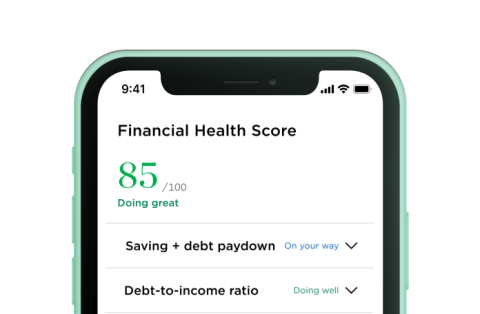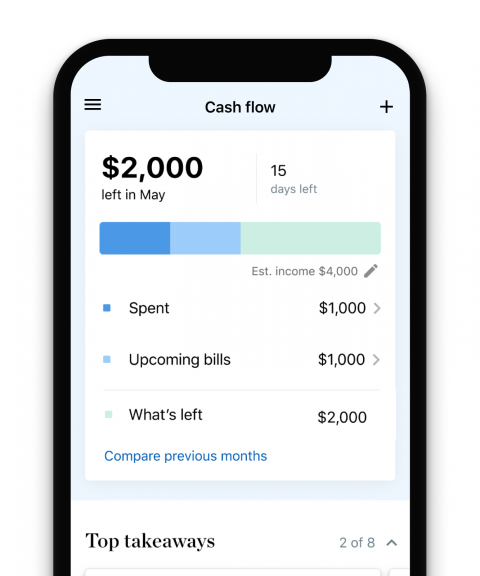Updated on July 18, 2024, to add the most recent CPI figures.
The average regular gas price in the U.S. as of July 18 is $3.506 per gallon, according to AAA, which tracks gas prices.
Are gas prices going up?
Since the start of 2024, the national average has increased 42 cents. Today’s price signifies a 7-cent increase from last month’s average of $3.440 per gallon, AAA data shows.
Gas prices remain relatively low compared to surges in 2022 and 2023. Today’s price is still much cheaper than it was June 16, 2022, when the highest average price was recorded at a whopping $5.016, according to AAA. The price a year ago was $3.563.
Meanwhile, gasoline taxes in seven states went up on July 1, generally by less than 2 cents.

Gas price inflation: What does the latest report say?
Falling gas prices helped to hold down the U.S. inflation rate in June, according to the latest consumer price index, or CPI, report published July 11 by the Bureau of Labor Statistics. The CPI measures changes in prices that consumers pay for goods and services including food, gas and rent.
The CPI’s gasoline index, which tracks prices for all kinds of gas, fell 3.8% from May to June. Gas prices are down 2.5% from the same time last year.
Economists and policymakers typically exclude energy prices from the inflation rate because of their volatility. However, gas prices play a big role in consumers’ perception of inflation and how the economy is doing overall. Here’s a look at how annual changes in the energy and gas indexes compare with the CPI.
Why are gas prices going up?
Gas prices tend to rise during the warmer months of the year because of higher demand and a switch to summer-blend gasoline. The direction of crude oil prices and other factors also can contribute to higher prices at the pump.
Driver demand
Drivers’ demand for gas hasn’t taken off so far this summer as it was expected to, AAA spokesperson Andrew Gross says in a June 13 news release. “Gasoline demand has trailed 2023 for most of this year, and analysts believe economic uncertainty may suppress demand this summer.”
Typically, prices start to rise in the spring as the weather gets warmer and people hit the road for spring breaks in March and April, according to AAA. Then, around Memorial Day weekend, gas prices start to climb until they peak in July. Instead, this year, prices have dropped since that long holiday weekend.
“So, is the typical robust summer driving season a thing of the past?” Gross says. “Or is gas demand just taking longer to pick up steam? We may not know until autumn.”
Summer-blend gasoline
In the spring, gas refineries switch from winter-blend to summer-blend gasoline, which is more expensive to make. Summer-blend gasoline is formulated to limit emissions during the warmer months when gas can evaporate more easily.
Oil prices
Despite ongoing wars in Ukraine and the Middle East, oil prices have been steady recently, based on the price of West Texas Intermediate crude, which is used as the benchmark for oil prices in North America.
Oil prices fell below $85 a barrel in mid-April and have stayed there.
The price of benchmark West Texas Intermediate crude oil has fallen from more than $115 a barrel in summer 2022 to about $82.85 today, according to AAA.
What state has the highest gas prices?
California has the highest gas prices, at $4.719 per gallon.
Drivers in the states below are seeing the highest average gas prices per gallon, according to AAA data on July 18:
California: $4.719
Hawaii: $4.695
Washington: $4.269
Nevada: $3.993
Oregon: $3.986
» MORE: Easy ways to save money on gas
What state has the lowest gas prices?
Mississippi has the lowest gas prices, at $2.998 per gallon.
Drivers in the following states are seeing the lowest average gas prices per gallon as of July 18, according to AAA data:
Mississippi: $2.998
Louisiana: $3.104
Texas: $3.121
Oklahoma: $3.143
Tennessee: $3.145
» MORE: Best gas credit cards
How are gas prices determined?
No single individual controls gas prices. Instead, the price of gas is determined by a complex set of factors that are at work long before the gas gets to your local station. Those factors include, per the U.S. Department of Energy:
The cost of raw crude oil, which is determined by international supply and demand
The cost to refine crude oil into gasoline
Taxes, which vary state-to-state
The cost of raw crude oil typically represents more than half of the cost of a gallon of gasoline, according to data from the U.S. Energy Information Administration (EIA).
Gas prices at the pump rarely reflect that day’s market conditions; instead, they represent costs incurred weeks, even months before. That lag makes prices slower to rise and slower to fall than news headlines might suggest. And while spot shortages, refinery production shortages or blending issues can drive up gas prices locally, big, nationwide swings in gas prices are almost always due to the price of crude oil.
Types of gas
There are four types of fuel available at the pump that will differ in price. The three non-diesel types of gasoline — regular, midgrade and premium — are categorized by octane rating, a measure of fuel stability (the pressure at which a fuel will combust in an engine).
Regular: The least expensive.
Midgrade or super: More expensive than regular but cheaper than premium and diesel.
Premium or super premium: Most expensive non-diesel gasoline.
The cost of gasoline at your local station depends on multiple costs and profits including :
» MORE: Why is diesel so expensive?

Why is gas so expensive in California?
Gas is most expensive in California for several reasons, including the state’s environmental regulations, taxes and California’s unique self-reliance on refining its own gasoline.
Did you know that the gasoline sold in California is different from gasoline sold anywhere else in the United States? Since the ‘90s, California has mandated that any gasoline sold in the Golden State be produced according to strict guidelines that reduce the gasoline’s overall emissions. As you might expect, California’s cleaner fuel blend is more expensive than the gasoline used by the rest of the nation.
Because of these regulations, more than 90% of gasoline used in California is refined in the state, according to the California Energy Commission. So, if any of the state’s refineries experience unplanned outages or disruptions, those gas prices climb even higher, since the state can’t boost its gasoline supply by importing dirtier fuel that wasn’t refined according to its regulations.
Also, gas prices are high in California because there’s just less gasoline being refined in the state. In late 2022, California mandated that all cars, trucks and SUVs sold in the state be zero-emission vehicles by 2035. Because of that, California’s refining industries are beginning to transition away from fossil fuels, according to The Hoover Institution, a public policy think tank at Stanford University.
Finally, taxes contribute to the state’s gas prices. Drivers in California pay 69.8 cents per gallon in state taxes — the highest state tax rate in the country.
Does the president control gas prices?
The president doesn't set the gas prices you pay at the pump. When prices go up, don’t blame the president. Conversely, when prices go down, don’t thank the president.
The White House is often held responsible for gasoline prices, but the administration rarely has effective tools to move the needle one way or the other. Supply and demand for oil is the culprit.
» MORE: How to choose a gas credit card
How does the Israel-Hamas war affect gas prices?
The Israel-Hamas war has the potential to raise oil prices, which would impact the price at the pump.
Neither Israel nor Gaza produce much oil, so the conflict’s immediate impact on oil and gas prices was limited. However, the war has motivated another group to attack commercial ships in the Red Sea, according to the Associated Press. The attacks, carried out by Yemen’s Houthis, have disrupted trade along that important route since November.
Shippers have taken longer, more expensive routes to avoid the region, according to AAA. That adds to the cost of the goods being moved. Oil prices have fluctuated throughout the course of the attacks, sometimes rising as tensions in the region increase.
As the war continues, direct involvement from other countries, like Iran, could further impact gas prices, according to CBS News. Iran is the world’s third-largest oil producer in OPEC, or the Organization of the Petroleum Exporting Countries, which collectively pumps roughly 40% of the global crude oil supply.




